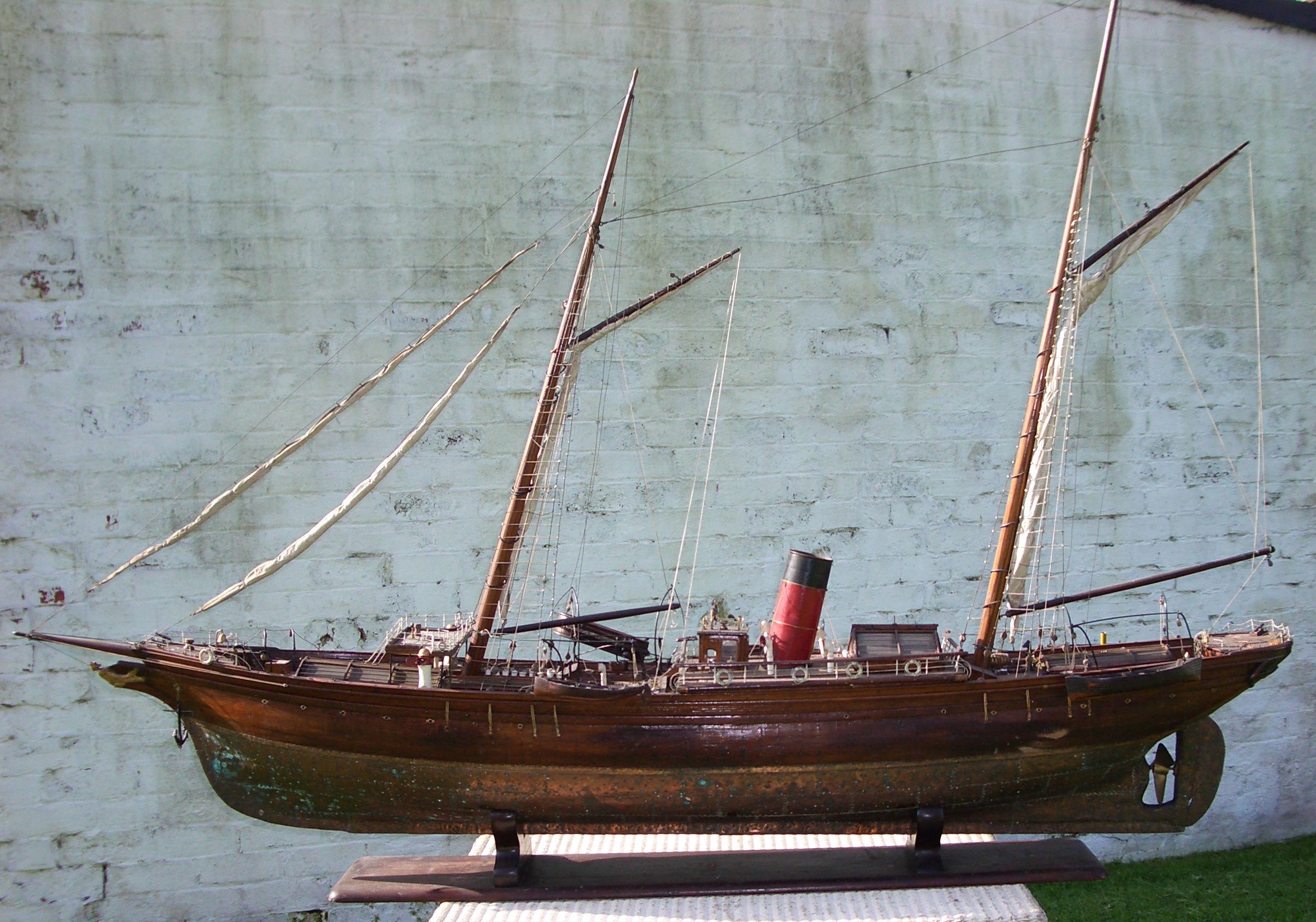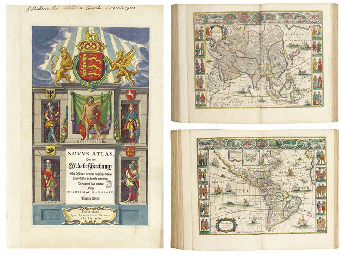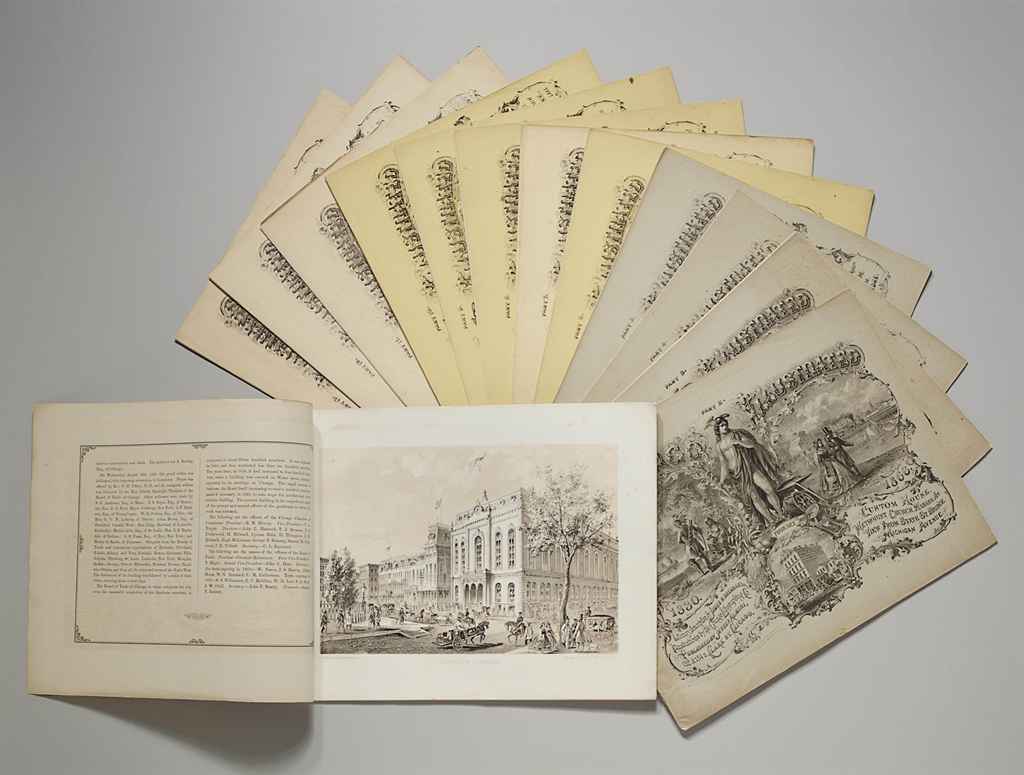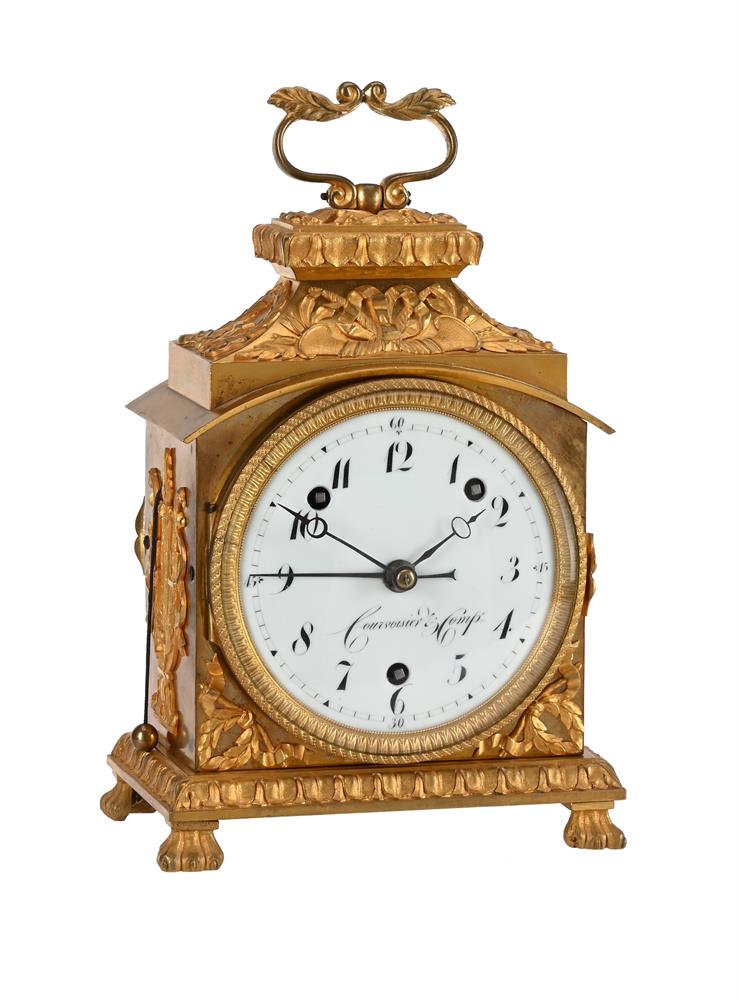A particularly fine, complete and complex 16th-Century German gilt-brass astronomical compendium, signed CHRISTOPHORVS SCHISSLER FACIEBAT AVGVSTE VINDELICORVM ANNO DOMINI 1563 -- 66 x 59 x 15mm. (2.6 x 2.3 x 0.6in.) with a walnut case applied with owner's label See Illustrations This rectangular instrument is in three sections: a central part to which upper and lower plates are hinged. When closed it can fit into the wooden (walnut) box with a sliding lid ( some loss and repair ). The inside of the box is lined in a dark brown cloth ( worn ). There is a 17mm diameter roughly cut hole in the centre of the base. On the outside of the upper plate is a nocturnal inscribed over two bands with the months and number of days, February 28, the rest 30 or 31 appropriately. A volvelle rotates at the centre, which has on the edge the hours of night 3 through 12 to 9, from evening to morning according to the latitude. At each hour mark is a small round knob for identifying the hour indicated by the index; by these knobs the user can find the hours at night with their fingers. At the 12th hour is a pointer that covers the calendar scales. Rotating from the centre is an index arm inscribed: REGVLA NOCTIS, which is to be aligned with the Guards of the Bear in the constellation Ursa Maior . The Pole Star is viewed through a hole at the centre of the plate. There follow, in four bands, with apertures and indexes, the length of day and night according to four latitudes: 45°, 48°, 51°, 54°. On the outer pair of bands the instructions are inscribed: QVANTI: NOCTIS ELIVATIO . 54 . QVANTITAS DIEI AD ELIVATIO POLI . 54 . QVANTI: NOCTIS ELIVATIO . 51 . QVANTITAS DIEI On the inner pair: QVANTI DIEI ELEVATIO . 48 . QVANTI NOC. QVANT DIEI QVANT NOC ELEVAT . 45 . The remaining area has an etched arabesque pattern. The underside of the plate has three circular bands, with 12 wind directions, instructions, and 24 hours numbered 1-12 twice. These are followed by a volvelle, the first band divided 1-12 twice, with an aperture at one of the 12-hour positions to view a scale 0-29½, the age of the Moon in days. Placed at the other 12-hour position is a Lunar aspectarium, to show the simulated phases of the Moon. Full Moon is a squinting face, New Moon is painted matt blue. At the centre is a bush with a hole piercing the plate into which inserts the peg at the base of the shaft supporting the wind vane, the direction of which is shown on the outermost ring. Note that this feature is on the inside of the lid and not on the outside. The plate is attached to the central section by a piano hinge. This lifts to show a horizontal dial with four rectangular chapter rings for the latitudes 54°, 51°, 48°, 45°. The hours are indicated in roman or arabic numerals alternately. The gnomon lies flat, and is hinged to stand vertically in use. The leading edge is ingeniously hinged to adjust for the latitude of use. At the centre of the plate can be viewed a circular magnetic compass with a glass cover, the base marked with the cardinal points: ME OC SE OR. The underside of the dial plate has a table of 32 German and Flemish cities with their latitudes. The punch for Z is missing in three cases, and a flat-headed 3 substituted (MÖNT3, LEYPT3IG, COBLENT3). The compass box is fitted on the inner side of the lower hinged plate. It has a rotatable collar and index passing over two bands. The first is divided in 360°: 0°-90°-0°-90°-0°. The second is divided in 16 compass directions, the cardinal points named: MERIDIES, OCCIDENS, SEPTENTRIO, ORIENS. The outside of the lower hinged plate (the bottom of the instrument) is inscribed with a stereographic hour diagram for 24 mean hours (roman numerals) of the day and 24 planetary hours (arabic numerals) or unequal hours. The horizon line is named: LINÆ HORI3ON . ORT: LINÆ HORI3ON . OCCA . (note repeated use of 3 replacing a missing Z). A solar declination scale is on the meridian line, the divisions of the year shown by the sigils
A particularly fine, complete and complex 16th-Century German gilt-brass astronomical compendium, signed CHRISTOPHORVS SCHISSLER FACIEBAT AVGVSTE VINDELICORVM ANNO DOMINI 1563 -- 66 x 59 x 15mm. (2.6 x 2.3 x 0.6in.) with a walnut case applied with owner's label See Illustrations This rectangular instrument is in three sections: a central part to which upper and lower plates are hinged. When closed it can fit into the wooden (walnut) box with a sliding lid ( some loss and repair ). The inside of the box is lined in a dark brown cloth ( worn ). There is a 17mm diameter roughly cut hole in the centre of the base. On the outside of the upper plate is a nocturnal inscribed over two bands with the months and number of days, February 28, the rest 30 or 31 appropriately. A volvelle rotates at the centre, which has on the edge the hours of night 3 through 12 to 9, from evening to morning according to the latitude. At each hour mark is a small round knob for identifying the hour indicated by the index; by these knobs the user can find the hours at night with their fingers. At the 12th hour is a pointer that covers the calendar scales. Rotating from the centre is an index arm inscribed: REGVLA NOCTIS, which is to be aligned with the Guards of the Bear in the constellation Ursa Maior . The Pole Star is viewed through a hole at the centre of the plate. There follow, in four bands, with apertures and indexes, the length of day and night according to four latitudes: 45°, 48°, 51°, 54°. On the outer pair of bands the instructions are inscribed: QVANTI: NOCTIS ELIVATIO . 54 . QVANTITAS DIEI AD ELIVATIO POLI . 54 . QVANTI: NOCTIS ELIVATIO . 51 . QVANTITAS DIEI On the inner pair: QVANTI DIEI ELEVATIO . 48 . QVANTI NOC. QVANT DIEI QVANT NOC ELEVAT . 45 . The remaining area has an etched arabesque pattern. The underside of the plate has three circular bands, with 12 wind directions, instructions, and 24 hours numbered 1-12 twice. These are followed by a volvelle, the first band divided 1-12 twice, with an aperture at one of the 12-hour positions to view a scale 0-29½, the age of the Moon in days. Placed at the other 12-hour position is a Lunar aspectarium, to show the simulated phases of the Moon. Full Moon is a squinting face, New Moon is painted matt blue. At the centre is a bush with a hole piercing the plate into which inserts the peg at the base of the shaft supporting the wind vane, the direction of which is shown on the outermost ring. Note that this feature is on the inside of the lid and not on the outside. The plate is attached to the central section by a piano hinge. This lifts to show a horizontal dial with four rectangular chapter rings for the latitudes 54°, 51°, 48°, 45°. The hours are indicated in roman or arabic numerals alternately. The gnomon lies flat, and is hinged to stand vertically in use. The leading edge is ingeniously hinged to adjust for the latitude of use. At the centre of the plate can be viewed a circular magnetic compass with a glass cover, the base marked with the cardinal points: ME OC SE OR. The underside of the dial plate has a table of 32 German and Flemish cities with their latitudes. The punch for Z is missing in three cases, and a flat-headed 3 substituted (MÖNT3, LEYPT3IG, COBLENT3). The compass box is fitted on the inner side of the lower hinged plate. It has a rotatable collar and index passing over two bands. The first is divided in 360°: 0°-90°-0°-90°-0°. The second is divided in 16 compass directions, the cardinal points named: MERIDIES, OCCIDENS, SEPTENTRIO, ORIENS. The outside of the lower hinged plate (the bottom of the instrument) is inscribed with a stereographic hour diagram for 24 mean hours (roman numerals) of the day and 24 planetary hours (arabic numerals) or unequal hours. The horizon line is named: LINÆ HORI3ON . ORT: LINÆ HORI3ON . OCCA . (note repeated use of 3 replacing a missing Z). A solar declination scale is on the meridian line, the divisions of the year shown by the sigils















Try LotSearch and its premium features for 7 days - without any costs!
Be notified automatically about new items in upcoming auctions.
Create an alert